“That was the impression I had taken from the winemakers we met in the Rhône. Value and balance: wine drinkers have cause for celebration,” writes Dean about his recent trip.
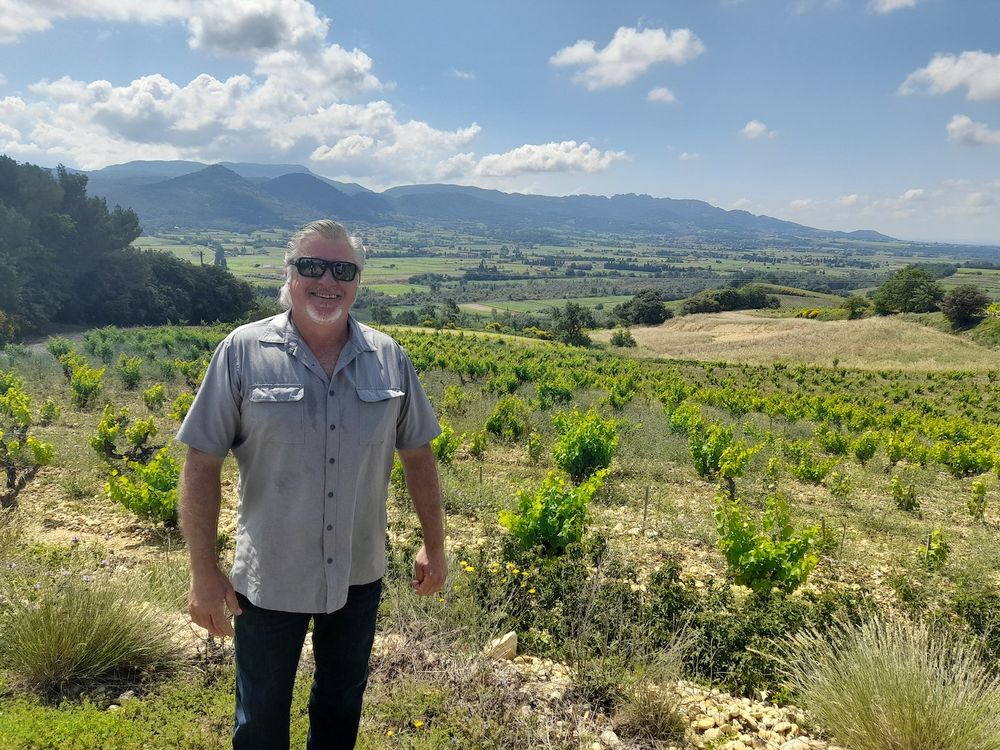
From California to Rasteau: Jon Larum from Domaine des Girasols
Jon Larum gazed out from his vineyards towards the Dentelles de Montmirail and Mt Ventoux, and sighed, “You’ll do well to find a better view from a winery in France, or one in California for that matter.” Who was I to disagree on a perfect early summer morning, as I took in the magnificent south-facing panorama from his Domaine des Girasols estate on the edge of Rasteau.
This enchanting little village in the Vaucluse department of the southern Rhône, with its castle ruins and 12th century Romanesque church where Larum, an American, and his French wife, Françoise Joyet, were married in the early 1990s, lies in one of those secluded little corners of France that are such a delight when you chance upon them.
Not that we were there by chance, of course, for Rhône wine body Inter Rhône had asked a small group of us over from the UK to visit what are sometimes termed the three ‘environs’ of Châteauneuf-du-Pape: Rasteau, Lirac and Costières de Nîmes as well as Saint-Joseph in the Northern Rhône. That does them a disservice for they are a special group of appellations. Their scenic beauty is matched by the congeniality of their winemakers and the quality, not to mention superb value, of their wines.
Rasteau – luminosity and generosity
Rasteau is one of those appellations that flies beneath the radar of most British drinkers. It received Cru recognition for its Vins Doux Naturels as far back as 1944, while its dry red wines finally got promotion from Côtes du Rhône Villages AOC to Cru status in 2010. The dry reds make up 97% of production, with VDNs the balance. Around 43% is exported, with the UK in fourth spot behind Canada, Switzerland and Belgium.

Julien and Jon Larum
Larum, who made wine in California before moving to France, and Françoise, along with their son Julien, make up an all-hands-to-the-pump family viticultural and winemaking team at Domaine des Girasols. Her parents planted the vines, around 15 hectares of them, in the 1970s and named the estate after the milky white variety of quartz called girasol. Used for gemstones, it comes mainly from Madagascar and South Africa but the Joyets took the name from an agricultural 18th century dictionary. For, much of their land is covered by the same ‘galets’ or large pebbles that were carried down from the Alps by the Ouvèze river when the glaciers melted some 18 million years ago.
The Larums took us on a drive around, or rather up into, his vineyards, whose steepness required a four-wheel drive.
“Rasteau’s soils are quite diverse even if we are covered by these galets,” he told me. “The higher proportion of clay, both blue and yellow, gives the red wines their distinctive richness and body. As you go up to the highest plots in Rasteau at 320 metres, you get all shades of marl as well as sandstone. Poor soils, then, but they sure produce high quality wines, and the Mistral is a big plus as it dries vines out after any rainy spells and keeps diseases away.”

Indeed, Rasteau’s altitude and south-facing aspect are the key in the view of Julie Paolucci, owner-winemaker at Domaine La Luminaille.
“Luminosity and generosity are the two words I associate with Rasteau,” she said, referencing the prolonged light exposure the vines benefit from. Her ‘Garance’ 2020 label, an alluring blend of Carignan, Grenache and Syrah, was rich and ripe, with juicy freshness and a plethora of spices (UK importers: Seckford Wines). At around £15 RRP, it offers great value, as do all of the Rasteau wines we tasted. These included Domaine Combe Julière, Domaine La Soumade and Rhonéa (a co-operative for nearly 400 growers). For the record, a minimum 50% Grenache component is required in AOC Rasteau wines, with yields restricted to 38 hl/ha for the reds and 30 hl/ha for the VDNs.
Lirac – gentleness and unique refinement

On a mission: Le Clos du Jas’ Grégory Sergent
While Rasteau sits to the north-east of Avignon, Lirac lies to the north-west of the city in the Gard department, on the opposite banks of the Rhône to Châteauneuf-du-Pape. There, a winemaker with an interesting past took us to the family’s holdings on the Plateau de Vallongue, where his oldest Grenache vines are 101-years old and the oldest Carignan 104. Grégory Sergent, 41, is a seventh generation vigneron, who spent 15 years in the French Army’s special forces before becoming a winemaker for Le Clos du Jas. Still looking fit enough to be on operations in Afghanistan where he did several tours, he says his new mission “is to show we can make great wine in Lirac.”
It was endearing to hear such passion from a hardened military veteran.
“The wines are like my children: I feel a lot of emotion with my wines,” he mused. “The finest soils for me are a combination of sand and the big stones. Acidity and freshness is so important, and the pH is lower on this side of the river due to the sand and the forest, which helps influence evaporation.”
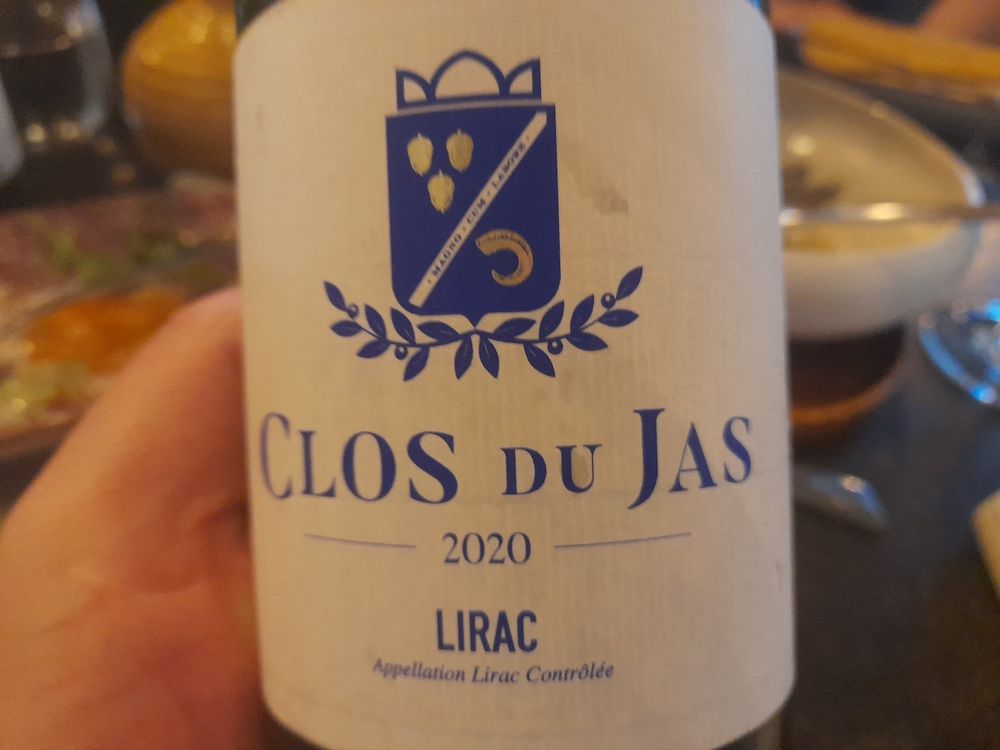
Sergent was referring to the neighbouring 600-hectare Bois de Clary. Farming biodynamically, Sergent also plants herbs among his vines to avoid a monoculture. His Clos du Jas 2020 showed really well, being a co-fermented blend of Grenache, Carignan, Cinsault, Mourvèdre, Clairette, Bourbulenc and Picpoul. High quality silky tannins, rich fruit and notable freshness with bite on the finish were its hallmarks.
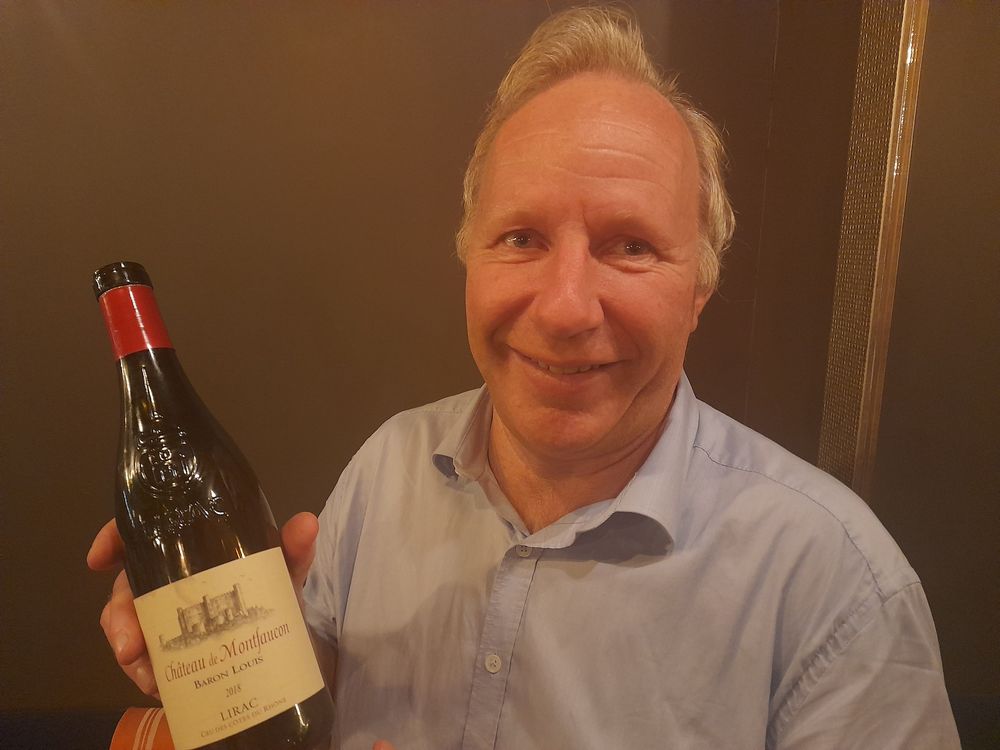
Rodolphe de Pins
Nearby Château Montfaucon has some even older vines, with a parcel of Clairette dating back over 150 years. Owner-winemaker Rodolphe de Pins worked at Vieux Télégraphe in Châteauneuf, and Henschke in South Australia, before returning in 1995 to the family estate that was bought by his great, great uncle in the late 19th century, after whom his flagship Baron Louis label is named. This is a 6-grape red blend, a GSM plus Cinsault and Carignan with one outlier in Counoise (£15.50 RRP at Lay & Wheeler).
“The Counoise is from a 2.5 hectare plot planted 85 years ago that yields 30 hl/ha,” de Pins said. “I like it as it’s late ripening and is floral as well as being high in acid.” When I asked why the other five varietals were mentioned on the label but not the Counoise, he smiled: “I can’t tell you – it’s an agreement with my wife!”

Benefiting from nature: Bernard Callet
Another wine that showed brilliantly, and was ridiculously good value at €20 (RRP in France) was the Domaine Coudoulis Cuvée Hommage 2020. I liked winemaker Bernard Callet’s apt comment that “we benefit from a sensational gift of nature: our vines are bathed by the rising sun, which gives our wines a gentleness and unique refinement.”
The Hommage (two thirds Grenache, aged in cement vats, and a third Syrah, aged in second and third fill oak) comes from 50-year old vines yielding 25 hl/ha. Perfumed with expressive red and black fruit, as well as spicy and cigar box notes, this elegant wine has finely honed tannins and decent length on the finish.
Costières de Nîmes – “Force et Elégance”
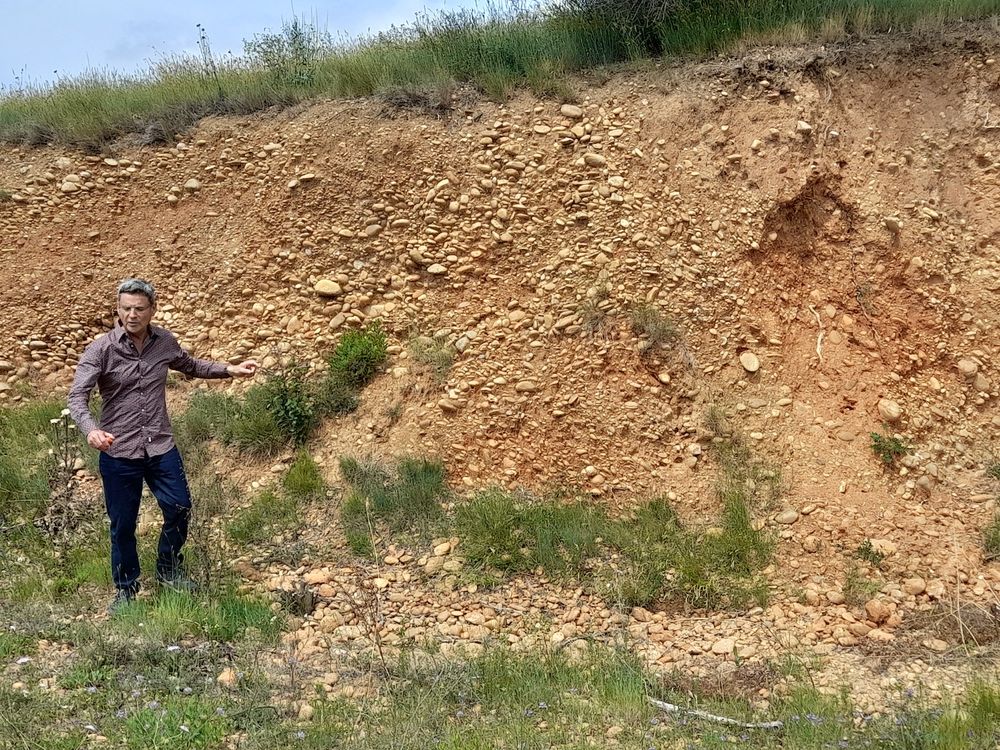
Collard at Mourgues du Gres: soils more in common with the Rhône than the Languedoc
The Costières de Nîmes AOC, the southernmost appellation of the Rhône Valley, lies between Montpellier and Arles. It was long regarded as part of the eastern Languedoc, being given the status of Costières du Gard VDQS (Vins Délimités de Qualité Supérieure) in 1951. This was upgraded to Costières du Gard AOC in 1986 before becoming Costières de Nîmes AOC three years later.
It was a fitting transfer of allegiance as the climate, soil and topography, not to mention the wines themselves, had more in common with southern Rhône vineyards. Grenache, Syrah and Mourvèdre must make up 65% of red wines, which are the majority produced although both whites and rosés are also made.

Once again, value for money, or ‘bon rapport qualité prix’ as the French call it, is a striking feature of the appellation’s wines. We tasted samples from a dozen different producers, with mid-market labels starting at €9 retail and premium examples typically at €21. “Force et Elégance” is our motto, declared the president of the AOC, Cyril Marès, whose own wine, Mas des Bressades Tradition 2022, exhibited both. The Wine Society imports it.

Quest for precision: Francois Collard
Château Mourgues du Grès, a stunning 16th century former convent where we had lunch, has an extensive range that is imported into the UK by Les Caves de Pyrene. Owner-winemaker, Francois Collard talked of his quest for “precision and purity of fruit, combining richness and minerality.” His wines showed all four attributes.
Other producers that impressed but have no UK importer were Domaine de Poulvarel, Château Font Barrièle and Pazac. The latter, a leading co-operative, is chaired by Nicolas Seydoux, whose niece Léa Seydoux, a well-known French actress, starred in two recent James Bond films.

Alexis Cornut: winemaker for Château Guiot
At an afternoon tasting at the picturesque Château d’Or et de Gueules, a couple of wineries with UK distribution stood out. The splendidly-named Alexis Cornut, winemaker for Château Guiot, showed his princely Paulinette 2018 label (available through Majestic). Made from 95-year old Grenache vines yielding only 20 hl/ha, as well as a dash (5%) of Syrah, this had fabulously concentrated fruit as well as firm tannins to give it structure. With lots of energy and an abv of 14%, it was also beautifully balanced.
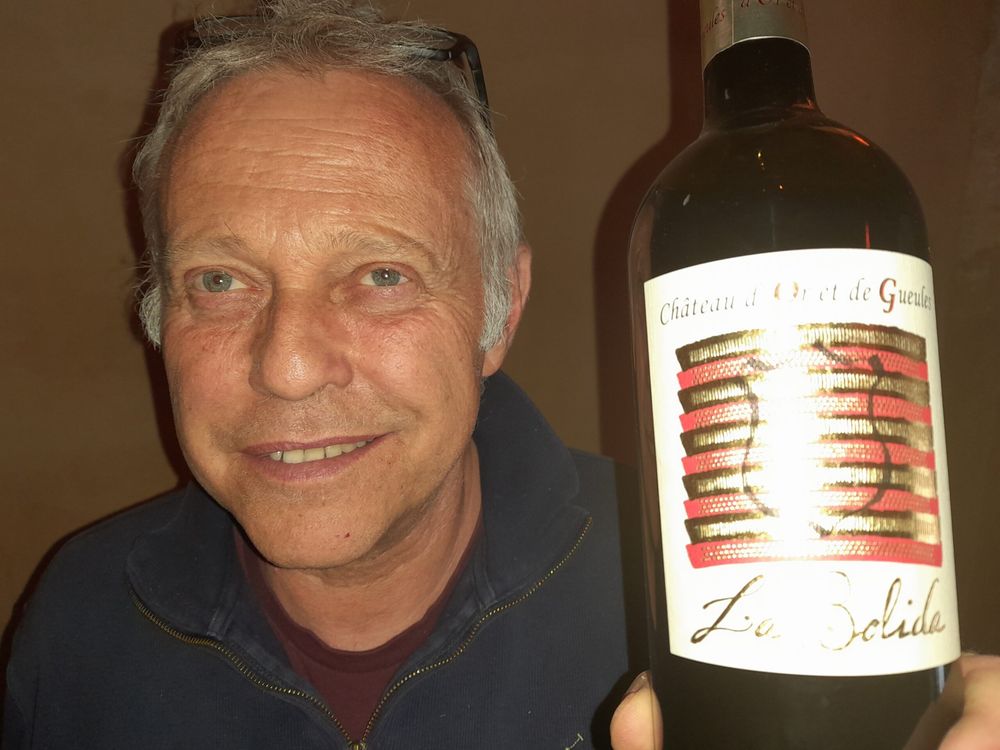
Old bush vines: Mathieu Chataine
Even older and lower-yielding Mourvèdre bush vines (10 hl/ha), planted in the early 1920s, made up 90% of the Château d’Or et de Gueules ‘La Bolida’ 2020 label. Imported into the UK by Gauntley Wine in Notts, this refined, complex wine is made by Mathieu Chataine and his wife Diane De Puymorin. The winery’s name derives from her family’s coat of arms, which dates back to the twelfth century.
The story surrounding another venerable Costières de Nimes label is worth telling. In 2014, an archaeological dig under Château Nages’ prime parcel of vines unearthed the remains of a Gallo-Roman vineyard. In the words of owner Michel Gassier, “our family couldn’t resist giving our vines free rein to express their legacy. So we called this bottle ‘Vox’ as it is their voice. Through it, their Roman ancestors whisper.” A GSM blend, it is imported into the UK by The Wine Beagle. All of Château Nages’ vineyards are organically farmed, as are those of Chateau d’Or et de Gueules, where Diane, Matthieu and their daughters all work and live on the estate.
Saint-Joseph: the rising star

Syrah planted on granite terraces: Joel Durand
Another pair of siblings, brothers Eric and Joel Durand, in the Saint-Joseph AOC, were our final port of call on the journey north to Lyon airport. Renowned Rhône Valley producer, Philippe Guigal, recently declared that Saint-Joseph “is decidedly the rising appellation in the northern Rhône, and will gain in fame and note as time goes on.” The Durand brothers are symptomatic of that. Their specialty is Syrah planted on granite terraced vineyards, and they make beautifully balanced examples of the varietal with seductive blueberry and cassis notes.
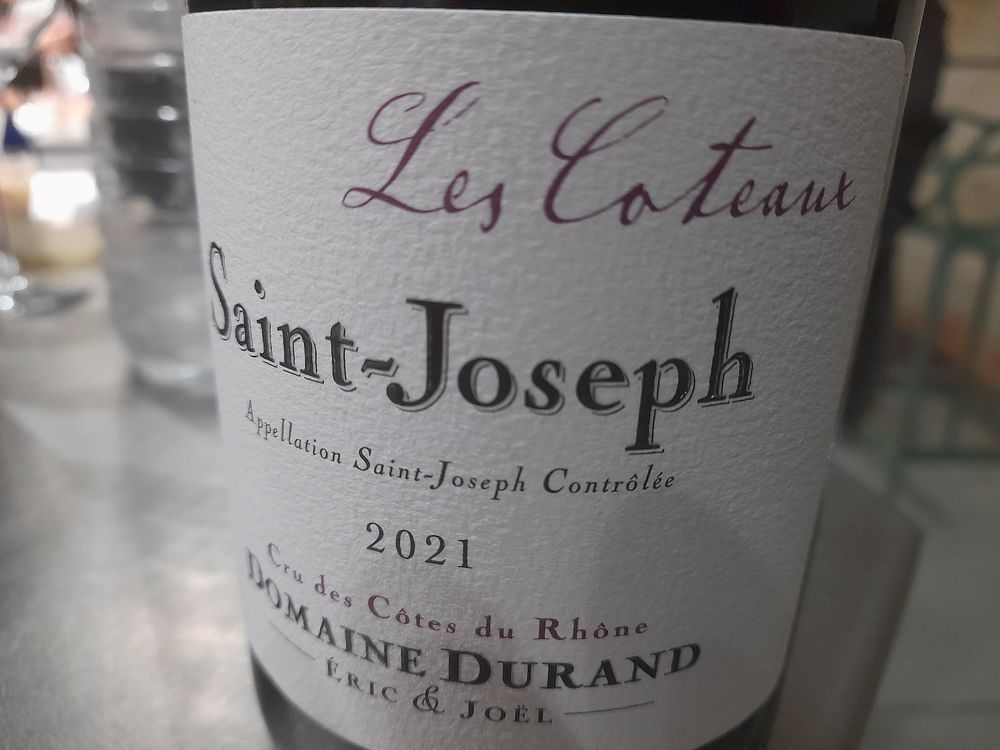
The Domaine Durand ‘Les Coteaux’ 2021, a sumptuous Syrah, was noteworthy for its 13% abv. “2021 was very unusual as alcohol levels were back to what they were twelve years ago,” Joel Durand said. “Alcohol is not very important for us – you can have less maturity at 14 degrees than at 12. What really matters is the balance between acid, maturity and sugar.”
That was also very much the impression I had taken from the winemakers we met in Rasteau, Lirac, Costières de Nîmes, Saint-Joseph and Côtes du Rhône. Value and balance: wine drinkers have cause for celebration.
A quick recap on those appellations
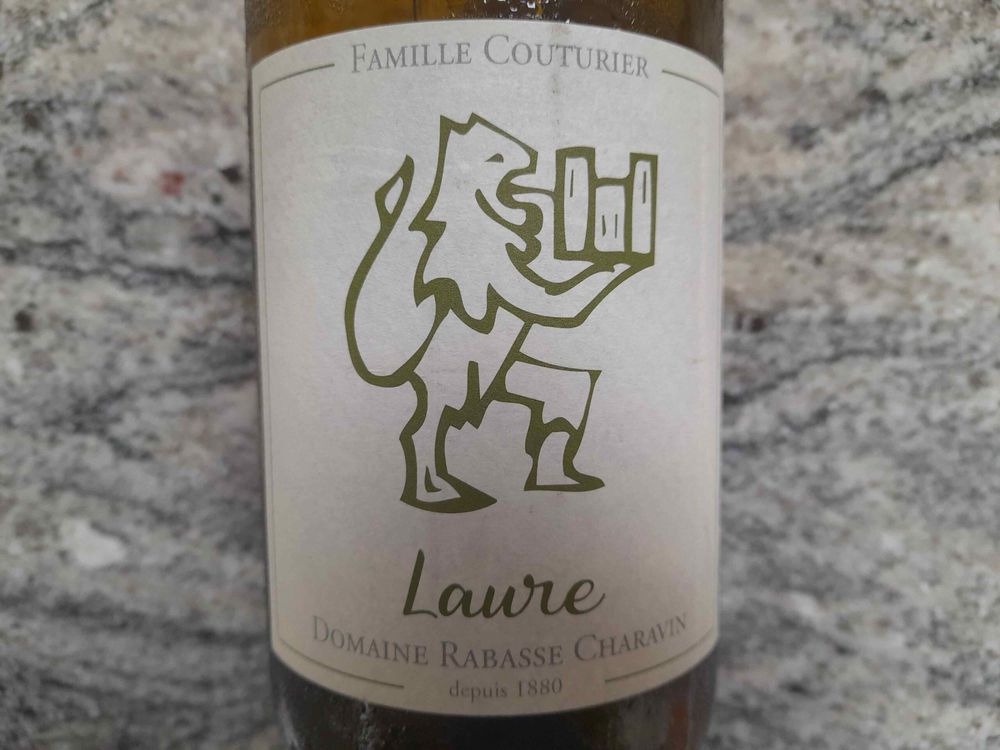
One of the Côtes du Rhône wines tasted
AOC Côtes du Rhône: the biggest production appellation of the Rhône Valley as a whole (48% of total harvest in 2022). It has 1592 independent wineries as well as 90 co-operatives, and is the most widely distributed, being found in 91% of French wine merchants. Wines tasted: Domaine Rabasse Charavin & Clos des Saumanes
AOC Rasteau: 60 producers and 3 co-operatives, with 1170 hectares under vine. Average production p.a is 30,000 hl of dry red and 1,000 hl of VDNs (Grenat, Rosé, Blanc, Tuilé, Ambré & Rancio). Main Varietals: Grenache Noir & Blanc, Syrah, Mourvèdre, Carignan, Cinsault. Elevation to Cru status: November 2010.
AOC Lirac: obtained Cru status in 1945, with appellation confirmed two years later by government decree. Named after the village of Lirac, it borders the neighbouring Cru of Tavel, a Rosé-only AOC. 85% production is red wines, 12% white, 3% Rosé. 854 hectares under vine with a very low yield in 2022 of 23 hl/ha.
AOC Costières de Nîmes:awarded Costières du Gard VDQS status in 1951 before becoming Costières de Nîmes AOC in 1989. Very close association with the town of Nîmes, with both town and appellation sharing same coat of arms: crocodile and palm tree. 2,859 h under vine (Rosé formed 47% production in 2022, and reds 44%).

Philippe Verzier
AOC Saint-Joseph: second biggest producer of the northern Crus after Crozes-Hermitage. 1,352 hectares under vine, with red wines forming 87% production and whites 13%. Reds in 2022 were 100% Syrah, with whites two thirds Marsanne and a third Roussanne. Wines tasted: M Chapoutier, Domaines Coursodon, Verzier and Durand.
































